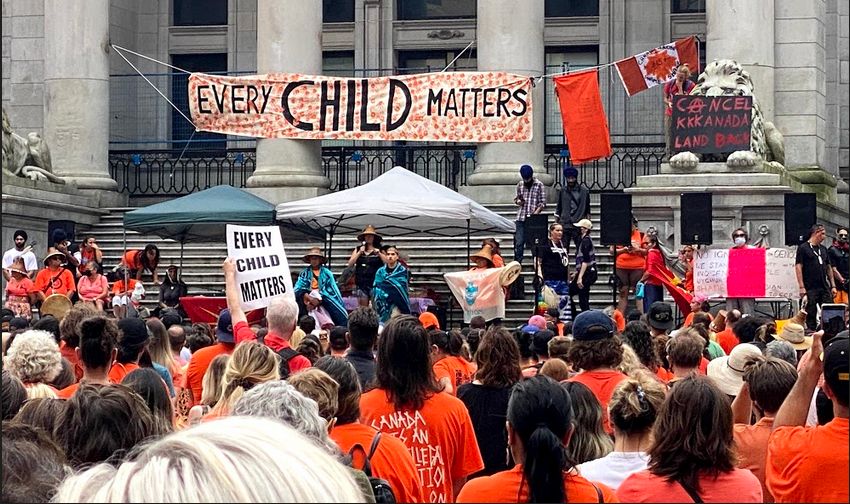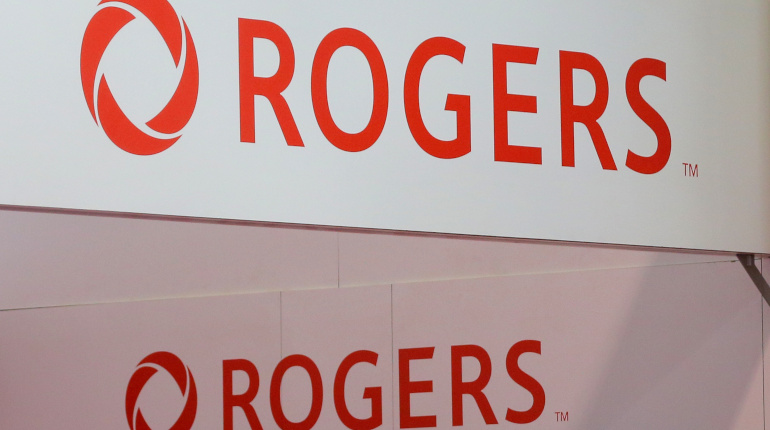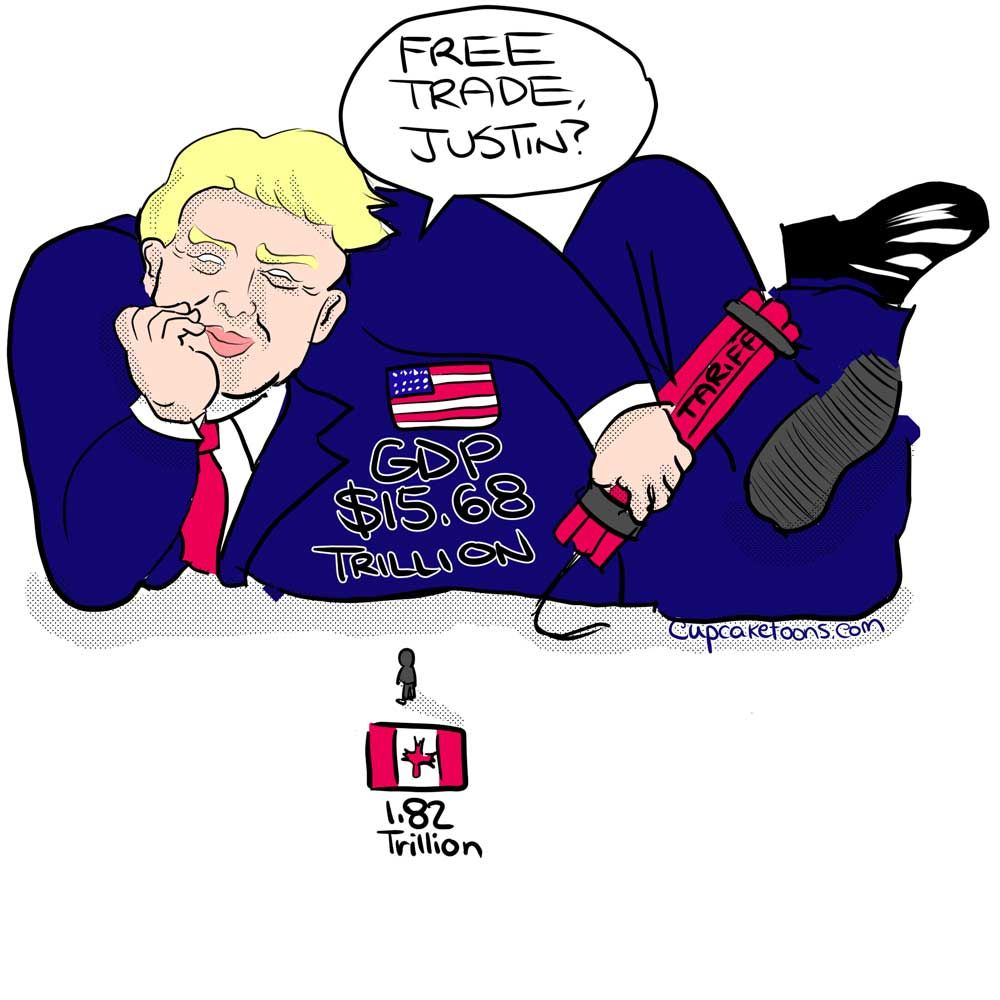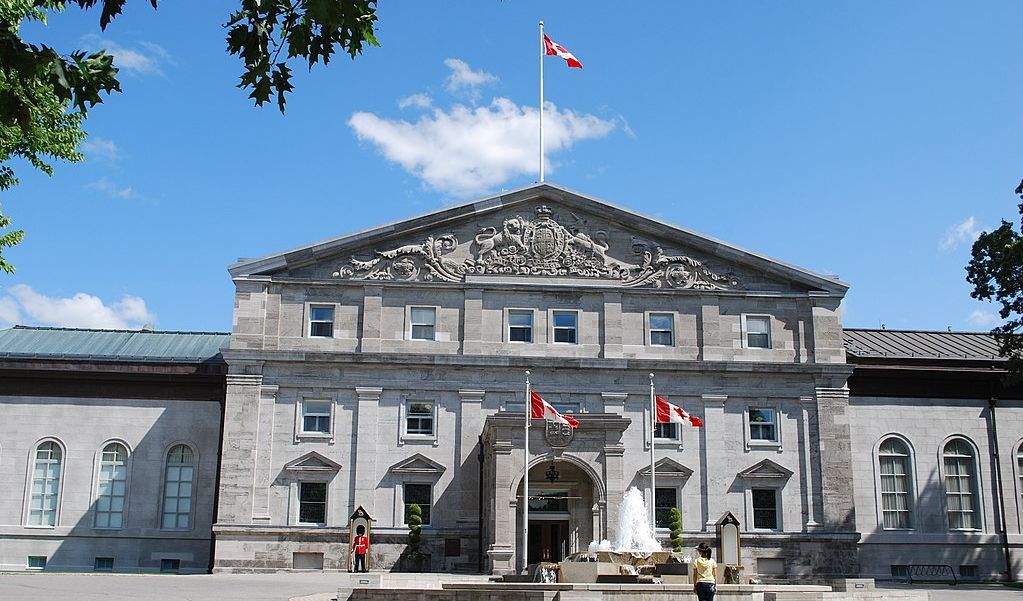A typical Canada Day will see most of the country awash with red and white. This year it was more covered in a bright and distinct streak of Indigenous orange. While July 1 marks the independence from the British colonial master, for Indigenous people colonialism did not end – it was intensified after 1867.
This year’s July 1 came in the wake of ongoing discoveries of unmarked graves of Indigenous children at church-run residential schools, with over 1,500 unmarked graves found at the time of writing, and with the certainty that thousands more will be found. Over a hundred cities and towns cancelled official Canada Day events this year, in spite of COVID-19 restrictions being loosened in much of the country. There were very few fireworks or other celebratory displays, either by governments or individuals. Instead, Cancel Canada Day rallies and marches, spearheaded by Idle No More, took place in at least 20 cities. Indigenous people and thousands of others expressed their sorrow and fury at the Canadian state and the churches that ran the residential schools, which were started when the Church of England (today’s Anglican Church) opened the Mohawk Institute in Brantford, Upper Canada (Ontario) on New Year’s Day, 1831.
The purpose of this and the other 138 facilities was to forcefully assimilate Indigenous people or, to use the brutal 1892 words of United States Army Captain Richard H. Pratt in reference to his own country’s system, “Kill the Indian, and save the man.” This was made plain from the start of the residential school system itself. Canada’s first prime minister, Sir John A. Macdonald, also took for himself the leadership of the Department of Indian Affairs and said in 1879: “It has been strongly impressed upon myself, as head of the Department, that Indian children should be withdrawn as much as possible from the parental influence, and the only way to do that would be to put them in central training industrial schools where they will acquire the habits and modes of thought of white men.” Yet more chilling were the 1910 words of Duncan Campbell Scott, soon to become the Department’s highest-ranking civil servant: “It is readily acknowledged that Indian children lose their natural resistance to illness by habitating so closely in these schools, and that they die at a much higher rate than in their villages. But this alone does not justify a change in the policy of this Department, which is being geared towards the final solution of our Indian Problem.” [emphasis added]
While the recent discoveries at the sites in the Tk’emlúps te Secwépemc, Cowessess, and other First Nations are gruesome, they are by no means surprising to Indigenous people. The past two months have been a ripping open of deep wounds already inflicted, which were never forgotten.
Speakers across the country, many of them residential school survivors themselves, talked to the crowds of the violence, abuses, and indignities they were subjected to by priests, nuns, Indian agents, and police. These assaults ranged from the monstrous to everyday abuses and humiliations. The very orange shirts worn across the country are a symbol traced back to the story of Phyllis Jack Webstad, who in 2013 told of how, as a six-year-old girl, she was stripped of her brand new “shiny orange shirt” upon arrival at St. Joseph’s Mission Residential School in Williams Lake, BC in 1973.
In addition to stories of beatings, sexual abuse, and malnutrition, there were also stunning tales of resistance and bravery, of teenagers leading their younger siblings in successful escapes, of children doing their best to protect one another from a schoolmaster’s belt.
Children grew up having their culture and language stolen from them. Taken from their homes, they hadn’t experienced loving parents, just brutal teachers in the schools endlessly telling them they were “bad,” “heathens” or “unclean.” This deep trauma sometimes impacted their children, too.
The stories of the survivors themselves and those of their loved ones equalled each other in power, showing that the damage done by the schools, the last of which closed in 1997, resonates through the generations and will take continued effort to heal.
Countless speakers pointed out that the systemic attempts to grind away their cultures and peoples has not ended today. Indigenous people are vastly overrepresented in foster care, homelessness, and prison, to say nothing of day-to-day racism from crude slurs to being quietly followed by security in a store. The residential schools and Sixties scoop continue today with Indigenous children being taken into foster care far too regularly, often because of poverty –poverty created by governments. Indigenous children make up 48 percent of those in the country’s foster care systems – up to 87 percent in Saskatchewan and 97 percent in the territories. Many of these children suffer abuse and neglect in these homes, even beyond the trauma of being separated from one’s family. The fact that survivors of this new system of torment took leading roles in organizing these protests is another example of the Canadian state’s failed efforts to steamroll Indigenous peoples out of existence, or at least push them out of the way.
Socialist Alternative’s largest intervention was in Vancouver, where there was enthusiastic support for our demands for true respect of Indigenous treaty rights (which would be a first in Canadian history), self-determination for Indigenous nations (which would clearly include the right to say no to huge industrial projects such as pipelines and dams), and an end to police violence against Indigenous people – whether that be brutal or humiliating arrests such as that of Athabasca Chipewyan First Nation Chief Allan Adam or of a grandfather and granddaughter handcuffed for trying to open a bank account, or of militarized police operations against land defenders such as the attack on Wet’suwet’en First Nation in February 2020.
Socialist Alternative made the decision to donate the money we raised on the day, $775, to the Indian Residential School Survivors Society, which provides counselling and other services to survivors of the residential school system and their families. We also gathered hundreds of signatures in support of our above demands and had countless conversations about the best next steps this movement can take, as well as the near-countless ways in which Indigenous people are disadvantaged in Canadian society – in the realm of housing for instance, where Indigenous people living on reserves are crowded into houses at double- or triple-capacity and Indigenous people in cities are an astonishing eight times more likely than non-Indigenous people to be homeless.
Rallies in cities including Winnipeg and Victoria featured topplings of statues of Queen Victoria and James Cook, respectively. These are expressions of deep and legitimate anger.
Millions in Canada and around the world have been shocked by this finding of unmarked graves. It makes painfully clear the level of horror of residential schools. In response to this anger, so far governments have only delivered platitudes. The most repugnant and derided of these has been a staged photo of a very solemn-looking Justin Trudeau, holding a teddy bear and kneeling at a grave. The rulers of Canada may agree to provide some resources to conduct more searches or to speed-up providing reliable clean drinking water to a few more reserves. If there is an ounce of honesty in Trudeau’s statements, his government would stop fighting today’s Indigenous children in court, trying to overturn two Canadian Human Rights Tribunal rulings.
Cancel Canada Day was a much-needed step in a positive direction for the Indigenous rights movement in this country. It will take mass struggle to force the Canadian government to take meaningful action to end the ongoing attacks on Indigenous land, lives and children. Fundamentally, Canadian capitalism rests on the stealing of land and resources from Indigenous peoples. As one of the speakers at Vancouver’s rally stated, the real enemy is the 1%.
There is still much work to be done to cancel capitalism and extinguish colonialism, which will guarantee quality lives for the Indigenous children of the future.




